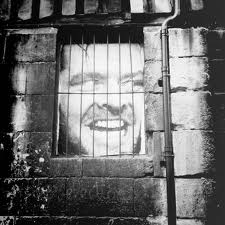
Is The Shining The Greatest Story of Addiction Ever Told?
Written by Logan Mazzettia, Posted on , in Section Teens & Tweens
By his own admission, Stephen King was a serious alcoholic when he wrote The Shining. This fact is well known, but he admits as much in the author's foreword for his new book, Doctor Sleep. The autobiographical undertones of The Shining have been discussed by King himself at length. Considering the fact that The Shining's main character, Jack Torrance, is a murderous psychopath who tries to chop up his family with an axe, this a pretty brave confession. When Stanley Kubrick made the film version of King's novel, he abandoned a big chunk of the book's plot, but that famous scene remained. And while the themes of addiction, and the uncontrollable rage which comes to rule Jack Torrance (as played by Jack Nicholson) are preserved, they are taken to a much more disturbing realm in Kubrick's vision.
If we look at both works together, we get a startling portrait of the way an addict sees himself, and the way the world sees the addict. In the foreword of Doctor Sleep, King refers to himself as a "well meaning alcoholic." What he meant was that he tried, in Jack Torrance, to find a way to communicate the situation a man finds himself in when his addictions begin to tear him apart from his family. Still, the character is portrayed with a great deal of empathy, and we see that his alcoholism is a kind of monster itself, and we know that the author feels that it's the monster that stands between the man and his family. This is in stark contrast with the Torrance of Kubrick's film, who is, and always has been, a monster just waiting to be activated by alcohol, or even the temptation of alcohol.
There aren't a lot of stories that show us that temptation can be every bit as deluding as drinking, or whatever substance it is we're talking about. The temptation to abuse substances can cause addicts to reprioritize their day, their week, their life. Temptation can cause wild mood swings. In some cases, just like in the case of Jack Torrance, the mere temptation to drink or smoke or shoot up can cause an addict to become a violent and unruly alternate world version of themselves.
When you read the book, it's possible to identify with the character. Watching the movie, it's another story. Read the book and you find the sad story of a man losing control of his mind, giving in to addiction as he grasps vainly, reaching out to hold onto his family. Watch the movie and you feel like a scientist, or an unfeeling young boy, who has put a scorpion and a spider in a glass jar, watching patiently to see what will happen. In this duality, we can get a clue about the popular perception of alcoholism.
An addict often views himself as the victim in an event that is happening to him. Victimhood as a state of mind is a way for alcoholics to excuse the way their life and relationships are crumbling around them.
From the outside, we often ascribe a certain amount of intentionality to addicts. Sometimes we believe that the addict is deliberately messing up. That there's maybe even actually a little bit of evil in it. That the addict is doing what they're doing because they just don't care.
However, there is an overlap between the two selves. In a film that is full of haunting visual imagery and ghosts, the scariest moment is also the most poignant and realistic moment. It's a moment that too many alcoholics will be able to relate to. And it takes place before either the book or the movie start.
The action of the story is set forth by an incident that happens shortly before we meet the Torrance family. Jack has recently gotten sober after accidentally breaking his son's arm while drunk. The entire film is haunted by this unseen event. The potential for violence and the threat of danger to Danny and his mother is the result of this inciting incident. We know that Wendy, his wife, believes his 5 month old sobriety is too fragile to be isolated in the Overlook Hotel, where they will be caretakers for the Winter season. Jack believes that he is removing himself from temptation, and going somewhere where he can get his head on straight and power through his recovery by willpower alone. But we know, just like the families of addicts have always known, that isolation is not the ideal solution for recovery. We know that it's Jack's arrogance that leads him to forgo a treatment program or a 12 Step approach.
Addiction is a Countdown to Implosion
The whole story feels like a countdown to the moment that Jack Torrance's addictions will swallow up Jack Torrance the man. The moment we know it's over is when Jack meets a ghostly bartender. Whether he is an actual ghost or just a hallucinated manifestation of Jack's all consuming desire to drink, we aren't quite sure. He is the one who suggests that Jack murder his family. In that moment, we know that Jack has chosen to feed his addiction at the cost of everything he holds dear. He's truly gone.
This is a moment that many addicts have found themselves in. You know that you're about to do something that you'll regret, but in the cost benefit analysis of addiction, the math can get a little fuzzy. The compulsion to drink or abuse whatever your particular substance of choice may be is so strong that you don't realize how much you value the things you used to hold so close. Sadly, just like what metaphorically happens to Jack Torrance, many alcoholics and other addicts never get the chance to have their values realigned.
Finding relief from addiction requires a serious willingness to be transformed. You have to have something to hold onto, to keep you tethered to the world. For many addicts, treatment is the only way to find relief.
If you know someone who needs life saving treatment so that they can recover from substance abuse, call Therapia at 1-855-652-HEAL (4325) today.
